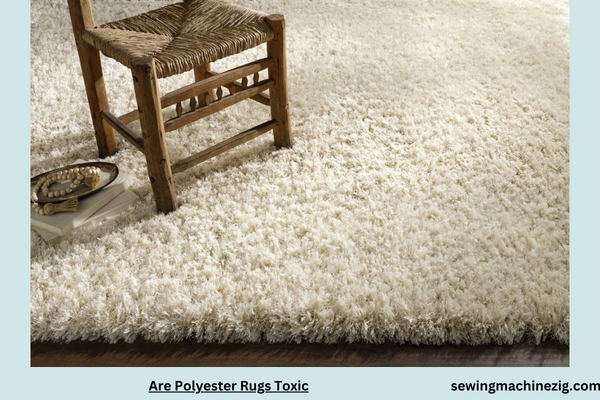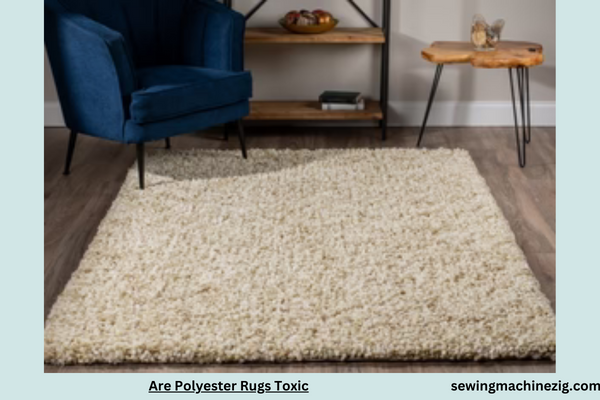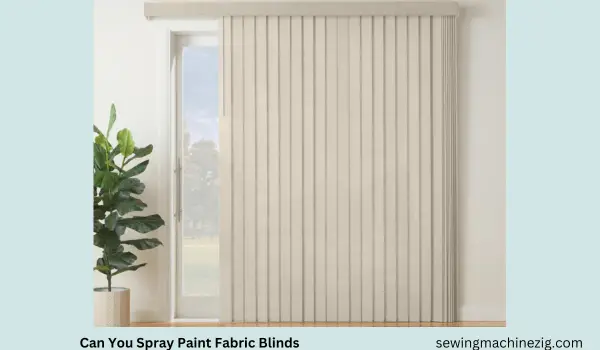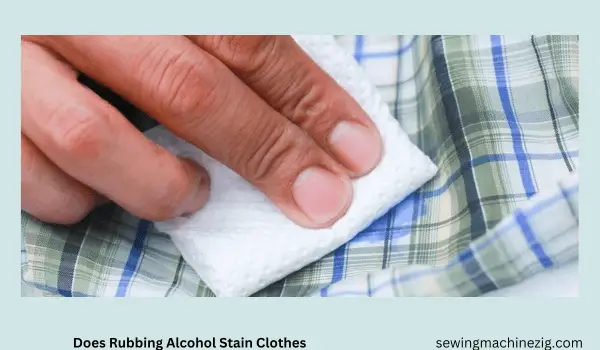
In a world increasingly conscious of health and environmental impacts, the question of whether polyester rugs are toxic has become a significant concern for consumers. Polyester, a popular synthetic material, is widely used in the textile industry, including rug production.
This article delves into the key aspects surrounding this query, examining the potential toxicity of polyester rugs and shedding light on the broader implications for individuals and the environment. By exploring the composition and manufacturing processes, we aim to provide a comprehensive understanding of whether polyester rugs pose health risks in our homes.
Are Polyester Rugs Toxic Detailed Answer

Polyester rugs have become a staple in many homes, offering an affordable and durable flooring solution. However, a growing concern among consumers revolves around the potential toxicity of polyester rugs.
In this comprehensive exploration, we will delve into the composition of polyester, its manufacturing processes, and the impact it may have on health and the environment. Let’s demystify the question: Are polyester rugs toxic?
Understanding Polyester: The Basics
Polyester is a synthetic polymer made from petroleum-derived chemicals. It belongs to the family of polymers known as polyesters, characterized by their long-chain structure. Polyester fibers are created through a process called polymerization, where monomers undergo a chemical reaction to form a polymer chain.
The Composition of Polyester Rugs
Polyester rugs are typically made from polyester fibers, which are woven or tufted into the rug’s backing. The composition of these fibers involves polyethylene terephthalate (PET), a type of polyester commonly used in textile manufacturing. PET is known for its strength, resilience, and resistance to mold and mildew.
One of the primary attractions of polyester rugs is their ability to mimic the look and feel of natural fibers like wool while being more affordable and easier to maintain. The synthetic nature of polyester also grants it resistance to stains, making it a popular choice for high-traffic areas in homes.
Manufacturing Processes and Potential Toxins
The manufacturing of polyester involves various chemical processes, and concerns about toxicity often stem from the use of certain substances in these processes. One such substance is antimony trioxide, a catalyst used in the production of PET. Antimony trioxide has raised environmental and health concerns, as it may be released into the air or water during manufacturing.
It’s important to note that stringent regulations and industry standards exist to limit the release of harmful substances during polyester production. Reputable manufacturers adhere to these standards to ensure their products meet safety requirements.
VOCs in Polyester Rugs
Volatile Organic Compounds (VOCs) are another aspect to consider when exploring the potential toxicity of polyester rugs. VOCs can be emitted from various synthetic materials, including some used in rug production. These compounds may contribute to indoor air pollution and, in some cases, cause health issues.
However, the concentration of VOCs in polyester rugs is generally low, especially when compared to certain flooring materials like vinyl or laminate. Proper ventilation and adherence to recommended off-gassing periods can minimize any potential impact of VOCs on indoor air quality.
Health Considerations
The question of whether polyester rugs can have adverse health effects depends on individual sensitivities and pre-existing conditions. Allergies to synthetic materials may cause discomfort for some individuals, but these reactions are often not exclusive to polyester and can occur with various materials.
If you have concerns about potential health impacts, choosing rugs labeled as hypoallergenic or made from organic and natural fibers might be a suitable alternative. Regular cleaning and maintenance can also contribute to a healthier indoor environment.
Environmental Impact of Polyester Rugs
Beyond health considerations, the environmental impact of polyester rugs is a significant aspect to explore. Polyester is derived from non-renewable resources, and its production requires energy-intensive processes. However, the durability of polyester rugs can contribute to a longer product lifespan, potentially offsetting some of the environmental impact associated with their production.
Some manufacturers are increasingly adopting sustainable practices, incorporating recycled polyester or other eco-friendly materials into their rug production. Consumers concerned about the environmental impact of their purchases can explore these options as part of a more sustainable lifestyle.
Tips for Choosing and Caring for Polyester Rugs
- Check Certifications: Look for certifications such as GREENGUARD or OEKO-TEX, which indicate that the rug has undergone testing for harmful substances and emissions.
- Ventilation: Allow new rugs to air out in a well-ventilated space before placing them in living areas. This helps reduce any potential off-gassing of VOCs.
- Regular Cleaning: Periodic cleaning of polyester rugs is essential to maintain their appearance and minimize the accumulation of dust and allergens.
- Consider Alternatives: If concerns persist, consider natural fiber rugs like wool or cotton, which may be more suitable for individuals with sensitivities.
- Research Manufacturers: Opt for rugs from reputable manufacturers known for their commitment to quality and safety standards.
In summary, the question of whether polyester rugs are toxic involves considerations of both health and environmental impacts. While polyester itself is generally safe and widely used in the textile industry, it’s essential to be mindful of manufacturing processes, potential additives, and individual sensitivities.
Consumers can make informed choices by researching manufacturers, checking certifications, and considering alternative materials if environmental sustainability is a priority. Ultimately, polyester rugs can be a practical and stylish addition to your home when chosen and maintained with a thoughtful approach to both health and environmental concerns.
Is A New Polyester Rug OK for My Baby To Crawl On?

Embarking on the journey of parenthood comes with a plethora of decisions, and creating a safe and comfortable environment for your baby is a top priority. When it comes to home decor, choosing the right rug is crucial, especially if your little one is in the crawling stage. If you’re considering a new polyester rug, you might wonder: Is it okay for my baby to crawl on?
In this detailed guide, we’ll unravel the considerations, benefits, and potential concerns to help you make an informed decision that blends safety with style.
The Comfort and Allure of Polyester Rugs for Babies
Polyester rugs are a popular choice for many households and for good reason. They are soft, durable, and come in a vast array of colors and designs, making them an attractive option for nurseries and play areas. The plush feel underfoot provides a comfortable surface for both adults and little ones, and the versatility of polyester allows for vibrant patterns and easy maintenance.
Understanding Polyester: A Baby-Friendly Fabric?
Polyester is a synthetic material derived from petrochemicals, and its composition includes polyethylene terephthalate (PET). The key question for parents is whether the components of polyester pose any risks to a baby’s health. The good news is that, in general, polyester is considered safe for babies and is widely used in the textile industry for various products, including baby clothes, blankets, and rugs.
Safety Considerations for Polyester Rugs and Babies
- Low Allergenic Potential: Polyester is naturally hypoallergenic, making it less likely to cause allergic reactions in babies with sensitive skin. This is a significant advantage for parents seeking materials that won’t irritate their little one’s delicate skin.
- Stain Resistance: Babies are notorious for spills and messes. Polyester rugs often come with stain-resistant properties, making them easier to clean and maintain. This feature can be a lifesaver for parents dealing with inevitable baby-related mishaps.
- Softness Underfoot: The soft and plush nature of polyester rugs creates a comfortable and gentle surface for crawling babies. This is particularly important as they explore movement and coordination during the early stages of development.
- Durability: Polyester rugs are known for their durability, with the ability to withstand regular foot traffic and play. This is advantageous in areas where babies crawl and play, ensuring the rug maintains its integrity over time.
Potential Concerns: Off-Gassing and VOCs
While polyester is generally safe, one aspect that some parents may be concerned about is off-gassing. Off-gassing refers to the release of volatile organic compounds (VOCs) into the air. These compounds can emit a slight odor and, in some cases, may be associated with respiratory irritation.
To mitigate potential concerns:
- Ventilation: Allow the new rug to air out in a well-ventilated space before placing it in the baby’s room. This can help dissipate any lingering odors.
- Choose Low-VOC Options: Look for polyester rugs labeled as low-VOC or consider products that have undergone certifications like GREENGUARD, indicating they meet specific standards for indoor air quality.
Maintaining a Clean and Safe Rug for Your Baby
Ensuring the cleanliness of your polyester rug is paramount, especially in areas where your baby spends time crawling and playing. Here are some tips for maintaining a clean and safe rug:
- Regular Cleaning: Establish a routine for vacuuming or shaking out the rug to remove dust and debris. This prevents the accumulation of allergens and provides a cleaner environment for your baby.
- Stain Removal: Act promptly if spills occur. Polyester’s stain-resistant properties make it easier to clean, but addressing spills quickly can prevent stains from setting in.
- Washable Rugs: Consider choosing a polyester rug that is machine washable. This feature can be a game-changer for parents, allowing for easy cleaning and maintenance.
- Avoid Harsh Chemicals: When cleaning the rug, opt for gentle and baby-safe cleaning products. Avoid harsh chemicals that may leave residues harmful to your baby.
Alternatives for the Health-Conscious Parent
If you’re a parent with heightened concerns about potential additives or prefer natural materials, there are alternative rug options to consider:
- Organic Cotton Rugs: These rugs are made from organic cotton, a natural and breathable material. They are typically free from synthetic additives and provide a soft surface for babies.
- Wool Rugs: Wool is a natural fiber known for its softness and durability. Wool rugs can be a cozy addition to your baby’s space, and they are often treated with fewer chemicals than synthetic options.
- Jute or Sisal Rugs: These rugs are made from natural plant fibers and are environmentally friendly. They add a touch of texture to the room and are free from synthetic components.
Choosing the Right Rug for Your Baby’s Space
- Consider the Room’s Purpose: The function of the room can influence your rug choice. For a nursery, you might prioritize softness and comfort, while a playroom may benefit from a more durable and easy-to-clean option.
- Design and Aesthetics: Polyester rugs come in a wide variety of designs and colors. Choose a rug that complements the room’s decor and creates a visually appealing space for your baby.
- Safety Standards: Look for rugs that adhere to safety standards and certifications. This ensures that the rug has undergone testing for potential hazards and meets quality benchmarks.
- Personal Preferences: Consider your lifestyle and preferences. If you value easy maintenance and a budget-friendly option, polyester may be an ideal choice.
Summary: Creating a Safe Haven for Your Baby
In summary, a new polyester rug can indeed be a safe and comfortable addition to your baby’s crawling and play area. With its hypoallergenic properties, stain resistance, and soft texture, polyester offers practical benefits for parents seeking a convenient and budget-friendly option.
However, every parent’s concerns and preferences are unique. If you have heightened sensitivities or prefer natural materials, exploring alternatives like organic cotton, wool, or plant-based fibers can provide peace of mind.
Ultimately, creating a safe haven for your baby involves a combination of thoughtful choices, regular maintenance, and a keen eye for safety standards. Choose a rug that aligns with your lifestyle and design preferences, allowing your little one to explore, crawl, and play in a secure and comfortable environment.
Conclusion
In the tapestry of home decor, the inquiry into the toxicity of polyester rugs unfurls a nuanced narrative. As threads of curiosity weave through the fabric of understanding, the guide illuminates the eco-friendly or potential hazards associated with these rugs.
A carpet oracle in the home arena, the guide navigates the labyrinth of materials, offering insights on safety. So, in the woven discourse of decor choices, the question, “Are polyester rugs toxic?” finds its answer, creating a unique and informative pattern in the textile of household decisions.
FAQs: Are Polyester Rugs Toxic?
Q1: Can the presence of toxic substances be expected in polyester rugs?
A1: Yes, it’s important to acknowledge that toxic substances can be present in some polyester rugs. When evaluating if polyester rugs are toxic, considering certifications like OEKO-TEX or GreenGuard is important for ensuring a safe and healthy living environment.
Q2: What steps are important in determining if polyester rugs are toxic, and why is this knowledge crucial?
A2: Checking for certifications and understanding the manufacturing process are important steps in determining if polyester rugs are toxic. This knowledge is crucial because assessing if polyester rugs are toxic ensures informed decisions aligned with health and safety standards.
Q3: Are there specific indicators to watch for when assessing if polyester rugs are toxic or not?
A3: Yes, there are important indicators to consider. Checking for strong chemical odors, verifying certifications, and being polyester rugs contribute to making informed choices. These indicators help assess if polyester rugs are toxic or pose any potential health risks.
Q4: How does the disposal of polyester rugs tie into preventing environmental toxicity, and why is this an important consideration?
A4: Disposal practices are important in preventing environmental toxicity from polyester rugs toxic substances. Adopting eco-friendly disposal methods is important to minimize the environmental impact and ensure responsible handling of polyester rugs toxic elements.
Q5: Can continuous exposure to polyester rugs potentially impact indoor air quality, and why is managing this important?
A5: Yes, continuous exposure to polyester rugs toxic elements may impact indoor air quality. Managing this exposure is important for maintaining a healthy indoor environment. Being aware of the potential effects of polyester rugs toxic elements is crucial for overall well-being.
A6: Understanding the materials is important because it empowers individuals to address concerns related to polyester rugs toxic elements. Knowledge about the composition is important for assessing and ensuring that polyester rugs are not toxic and safe for use.



